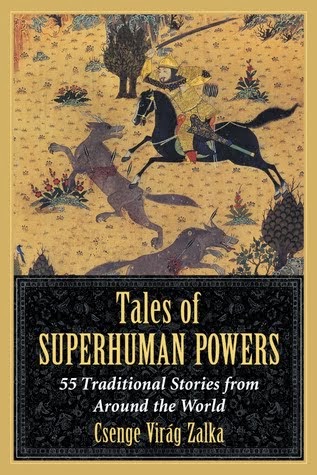StorySpotting is a series about folktales, tropes, references, and story motifs that pop up in popular media, from TV shows to video games. Topics are random, depending on what I have watched/played/read recently. Also, THERE WILL BE SPOILERS. Be warned!
I don't usually post about shows where the entire story is based on folklore, but this season of True Detective was just too well done.
Where was the story spotted?True Detective: Night Country (Season 4)
What happens?
What happens?
When the entire crew of an arctic research station disappears at the start of the weeks-long winter night, two (personally messed up, as per usual for TD) detectives start trying to solve the case. The plot is intertwined with Indigenous tradition, identity, and relationships with the white residents of the town. There is a distinct supernatural tint to this season: people seeing (and getting clues from) spirits and ghosts, traditions being carried of questioned, and an open-ended season finale that leaves room for explanations that are not tangible.
Early on, the young son of one of the policemen in town is seen drawing a gory picture (below). When his (white) father is taken aback by this, his Indigenous mother argues that he should "know his own culture." It has been confirmed by showrunners that the image is that of the goddess most often referred to as Sedna. The rest of the show has many more moments that reference her myth and her character, although she is never mentioned by name (only as She). The plot is also - loosely - based on her story, if you look close enough.
The earliest published records of this story can be found in Franz Boas' book on Inuit culture (1903), and Knud Rasmussen's books on the Thule Expeditions in the first decades of the 20th century. They collected a lot of information on Inuit folklore and mythology - stories among them. For example, Rasmussen writes that the most powerful spirit in Netsilik tradition was named Nuliajuk, mistress of land and sea and the mother of animals. Boas records her name as Sedna.
So here are some of the elements of this mythology that make a appearance in the show:
- The goddess can make hunting bountiful, or can make animals disappear (In the first scene of the season, we see reindeer fleeing into the abyss from a hunter.)
- She used to be a mortal woman who was thrown overboard into the sea, and people (or her own father) cut her fingers off when she clung to the kayak. Her fingers turned into seals and other sea creatures, and she sank to the bottom of the ocean, becoming a powerful spirit. In some versions, one of her eyes is also knocked out. (See drawing above. I would also argue that the missing eye of a witness, and the missing fingers of the killer who is finally revealed are also an homage to Sedna.)
- She has a house made of whale bones at the bottom of the sea (The ice cave the detectives finally locate has frozen whale bones in the walls.)
- She can summon blizzards (A blizzard, and other freak weather events, play an important role in the show)
- She is especially dangerous, with a lot of taboo directed at her, during the dark time of the year (Which is when the show takes place.)
- When people don't observe taboo, or disrespect nature, she is angered, and she hides the animals. These times, shamans have to descend into her realm to placate her, by combing all the filth out of her hair. (Many people in the show literally descent under the ice, and have various visions and journeys, trying to solve the case that seems like the result of her wrath over the pollution of the local mines.)
- In connection to the above, one source mentions that the "pollution" that offends the goddess is designated with the same word that is used for stillborn children. (In the show, it is specifically mentioned that several children had died due to the pollution from the mines.)
- She also rules over the underworld, where people's spirits go after they die, at least for a while. (Many deceased people make an appearance in the show, talking to various living relatives.)
You can read in detail about Sedna's mythology - and its relationship to environmental awareness - in this book.
Conclusion
I really enjoyed slowly picking up on the references to the myth over the course of the show, and then making guesses at what the solution was going to be. I still did not anticipate the actual reveal in the finale, but I think it was excellently done.









I was intrigued and drawn in as I watched Season Four of True Detective,- Night Country. It was delightful to see Story so well developed to reflect Goddess Lore respectfully through the lens of one group of indigenous people.
ReplyDeleteI coordinated a peace rally many years ago where local magik practitioners evoked the Goddesses of the masks we wore. One Goddess who was worn and evoked was Sedna.